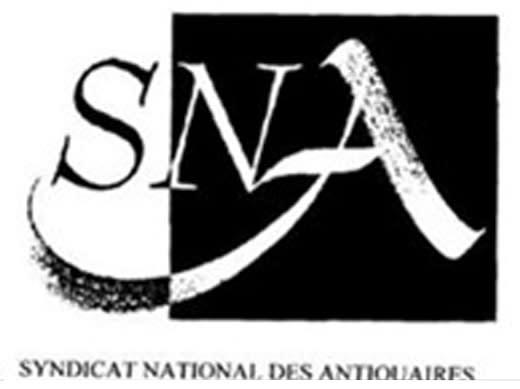1.Read or download your copy HERE
2. Read or download your copy HERE
TALISMANS FOR THE KINGS
Sought after by specialist collectors in the modern period and an object of mystical fascination in the past, coral has always had a sort of magical aura evoked by its supposed protective properties, its sumptuous colour and the legendary origins from the blood spilled from the head of Medusa, severed by Perseus. In an erudite treatise of the 13th century, Alfonso X of Castile, known as Alfonso the Wise, placed coral among the stars in accordance with Arab astrological tradition. He identified the star that channelled the beneficial actions of this reddish substance to the highest degree between the nostril and one of the eyes in the constellation of Taurus. Unexpectedly, however, he also wrote that the most prized types of coral came from the seas of England and Sardinia.
Coral’s symbolic, almost propitiatory, properties were easily transferred into the imaginary and the religious faith of Mediterranean countries, and it took on that decorative role that we now admire in domestic shrines, holy water fonts, crucifixes, altar furnishings and religious amulets of every shape and style. All these works, and those made for secular purposes, shared a homogenous style deriving from the artistic culture of the Sicilian Baroque and developed particularly by the artisans active in the city of Trapani. Though coral working is also known to have flourished in other towns of the Viceroyalty of the Two Sicilies, most of the pieces presented here are in an unmistakeable style that charmed the whole of Europe and that seems typical of Trapani.
Elsewhere, on the other side of the Alps, all the continental courts and especially those of the Habsburgs in Austria and Spain, were greedy for carved or unworked coral. “Coral mountains” were manufactured from the 16th century onwards: Charles I owned several and the Kunstkammer of Munich and Innsbruck had a wealth of them[i]. It has been written that in Munich Albert V had purchased so much coral that his son and heir, after ascending to the throne in 1579, refused to buy any more[ii]. Even further north, Gottorf Castle housed a collection of rare coral sculptures, tiny but precisely executed: an inventory of the residence drawn up in 1694 listed as many as sixty-seven. The surviving pieces portray the Capitoline Wolf and the twins, the Sacrifice of Isaac, a fisherman, Andromeda tied to a large purple branch, a fantastical ship steered by a sort of demon and holding four agitated putti. Scholars still disagree over their place of origin – Sicily or Northern Europe – in part because they are all mounted in typically northern style.[iii]
By contrast, the precious objects illustrated in these pages present a characteristic workmanship, using copper foil into which coral rods, commas, drops and spheres were set from the back to form surfaces that rival the fluid composition of embroidery and fabrics. Interestingly, the “coral workers” of the kingdom made the art of embroidery a genuine branch of their activity and eventually adopted the sewing technique, used to make antependia and even wall hangings. The technique was also employed, as we know from a magnificent velvet dress[iv], to create clothes covered with floral motifs made up of tiny coral beads. Equally typical is the ornamentation of the metal plaques used in the objects from Trapani presented here: a dense pattern of tiny perforations forming decorative plant motifs on the back and those parts of the front left free.
During the decades of the mature Baroque, between the 17th and 18th centuries, complex artefacts were made, embellished with a combination of coral and silver, mother of pearl or ivory. But the material paired most successfully with the reddish colours of coral is the snow-white enamel used to adorn the edges of objects of the early 17th century in a dense, milky filigree, sometimes with minute contrasting touches of blue and green, forming flowers and angels’ wings surrounding the shrines and holy water fonts intended for private devotion. But were these sophisticated items truly meant for religious worship? In Rome, in 1714, the inventory of the Contestabile Colonna, a prince with close connections to the southern court, mentions a display case for curiosities in which numerous corals are listed. These are both sacred and secular, stored together with foreign majolicas in a manner more in keeping with the erudite purposes of the Wunderkammer than any pious intentions[v].
The date of these artefacts covers a broad period between the early 17th century to the middle of the following century. For those decorated with enamel mentioned above we find assistance in one of the few works of certain date: a lamp made in 1632 by Matteo Bavera for the Church of San Francesco in Trapani (now in the Museo Pepoli in the same city) supported by enamelled chains in this style. Towards the second half of the 17th century, as we have said, the sewing technique must have become established, more three-dimensional than the earlier style and as such more suited to expressing the vigour and volume of Baroque curves. Finally, at the end of the 18th century coral came to be used mainly for jewellery, cameos set into tiaras and bracelets but also very occasionally used to decorate furniture. The set of plaques presented here, on classicizing subjects, is a magnificent example of this new fashion, particularly popular in Naples[vi] where French rule, in the very early years of the 19th century, helped to popularize this genre of artefacts. Abandoning altars and domestic ornaments, coral became a personal adornment for ladies, with the gentle harmony of its many chromatic variations and a faint reminiscence of its legendary apotropaic properties.
[i] A. MacGregor, The Late King’s Goods, London & Oxford, 1989, pp. 414-415
[ii] A. MacGregor in The Origins of Museums, Oxford, 1985, p. 82
[iii] Gottorf im Glanz des Barock, Schleswig, 1997, I, pp. 418, 419; II, pp. 73-75
[iv] A. Szlilágyi, Die Esterházy-Schatzkammer, exhibition catalogue, Budapest 2006, no.59



